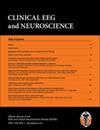基于深度学习的人工智能可高精度区分抗药性和应答性抑郁症病例
IF 1.7
4区 医学
Q3 CLINICAL NEUROLOGY
引用次数: 0
摘要
背景:尽管抑郁症的治疗方法有很多,但很大一部分抑郁症患者被诊断为抗药性抑郁症(TRD),其特点是对抗抑郁治疗反应不充分。识别 TRD 群体对于节省抑郁症治疗的时间和资源至关重要。最近有几项研究在脑电图数据集上采用了各种方法来自动检测抑郁症或预测治疗结果。然而,之前还没有研究使用深度学习(DL)方法和脑电信号来检测治疗抵抗。研究方法在脑电图数据上使用 GoogleNet 卷积神经网络和 DL 对 77 名 TRD 患者、43 名非 TRD 患者和 40 名健康对照组进行比较。此外,还使用从TRD组和非TRD组获得的类激活图(CAM)来获得用于分类的独特区域。结果GoogleNet 对健康对照组和非 TRD 组的分类准确率为 88.43%,对健康对照组和 TRD 受试者的分类准确率为 89.73%,对 TRD 组和非 TRD 组的分类准确率为 90.05%。TRD-非 TRD 分类的外部验证准确率为 73.33%。最后,CAM 分析表明,TRD 组在几乎所有电极的深度学习架构类别检测中都包含主导特征。局限性:我们的研究受到临床组样本量适中和研究回顾性的限制。结论这些研究结果表明,基于脑电图的深度学习可用于对抑郁症的治疗阻力进行分类,将来可能会被证明是精神病学实践中的一种有用工具,可用于识别需要更有力干预的患者。本文章由计算机程序翻译,如有差异,请以英文原文为准。
Deep Learning-Based Artificial Intelligence Can Differentiate Treatment-Resistant and Responsive Depression Cases with High Accuracy
Background: Although there are many treatment options available for depression, a large portion of patients with depression are diagnosed with treatment-resistant depression (TRD), which is characterized by an inadequate response to antidepressant treatment. Identifying the TRD population is crucial in terms of saving time and resources in depression treatment. Recently several studies employed various methods on EEG datasets for automatic depression detection or treatment outcome prediction. However, no previous study has used the deep learning (DL) approach and EEG signals for detecting treatment resistance. Method: 77 patients with TRD, 43 patients with non-TRD, and 40 healthy controls were compared using GoogleNet convolutional neural network and DL on EEG data. Additionally, Class Activation Maps (CAMs) acquired from the TRD and non-TRD groups were used to obtain distinctive regions for classification. Results: GoogleNet classified the healthy controls and non-TRD group with 88.43%, the healthy controls and TRD subjects with 89.73%, and the TRD and non-TRD group with 90.05% accuracy. The external validation accuracy for the TRD-non-TRD classification was 73.33%. Finally, the CAM analysis revealed that the TRD group contained dominant features in class detection of deep learning architecture in almost all electrodes. Limitations: Our study is limited by the moderate sample size of clinical groups and the retrospective nature of the study. Conclusion: These findings suggest that EEG-based deep learning can be used to classify treatment resistance in depression and may in the future prove to be a useful tool in psychiatry practice to identify patients who need more vigorous intervention.
求助全文
通过发布文献求助,成功后即可免费获取论文全文。
去求助
来源期刊

Clinical EEG and Neuroscience
医学-临床神经学
CiteScore
5.20
自引率
5.00%
发文量
66
审稿时长
>12 weeks
期刊介绍:
Clinical EEG and Neuroscience conveys clinically relevant research and development in electroencephalography and neuroscience. Original articles on any aspect of clinical neurophysiology or related work in allied fields are invited for publication.
 求助内容:
求助内容: 应助结果提醒方式:
应助结果提醒方式:


